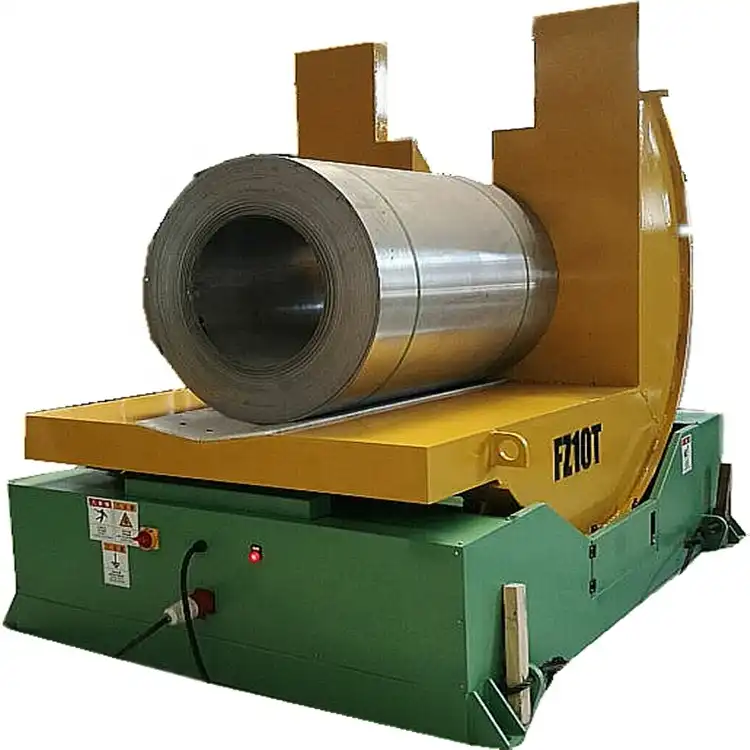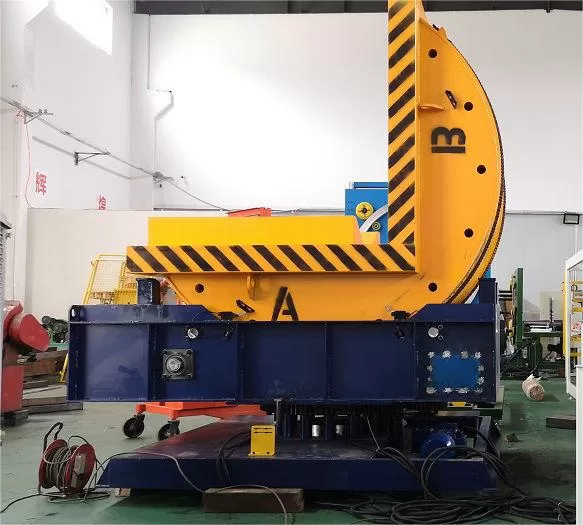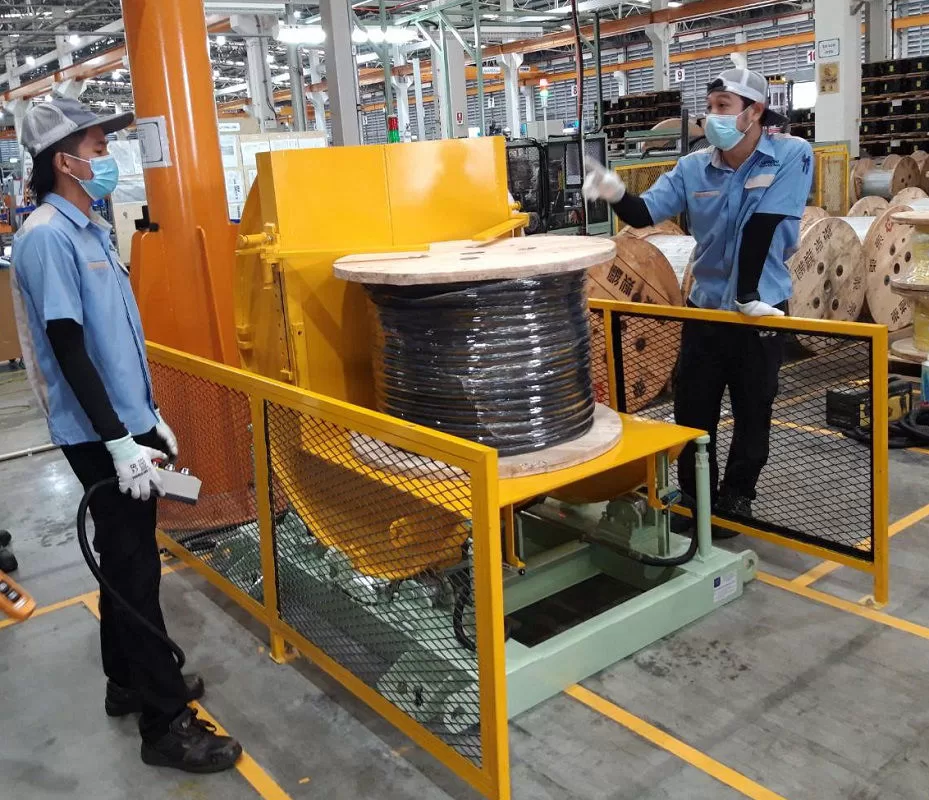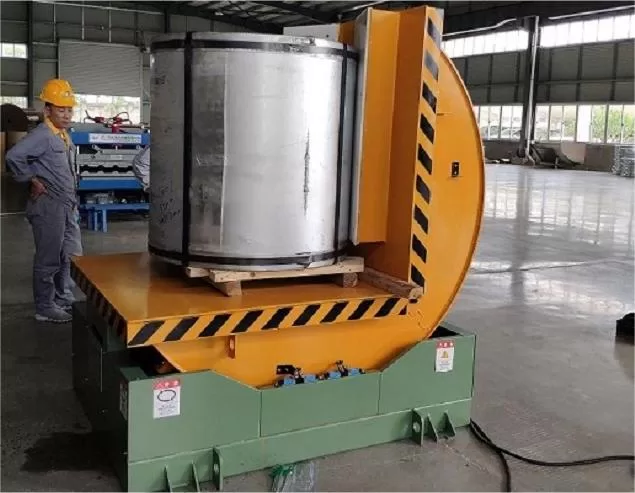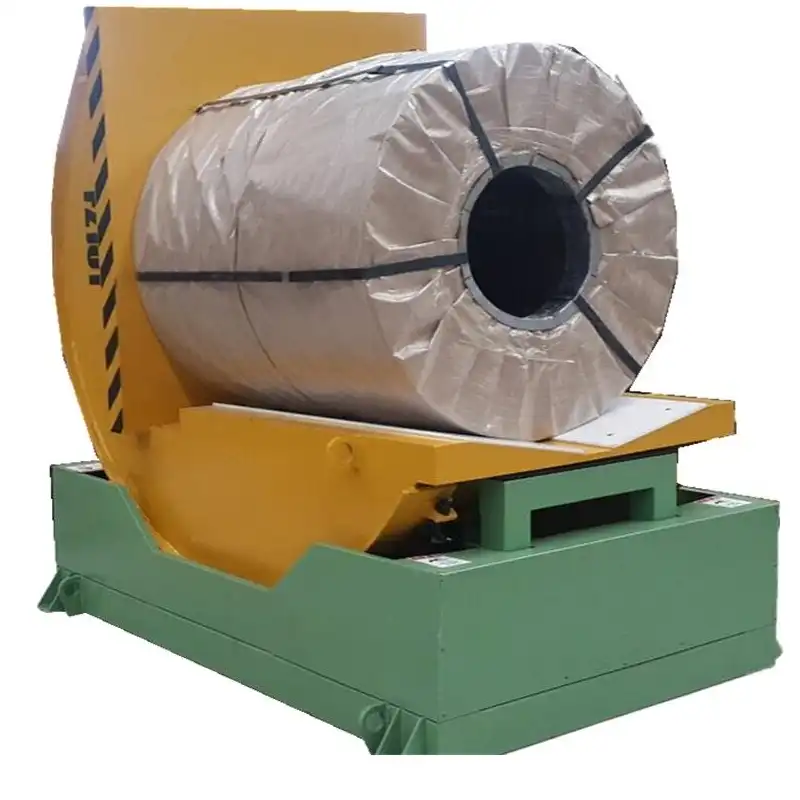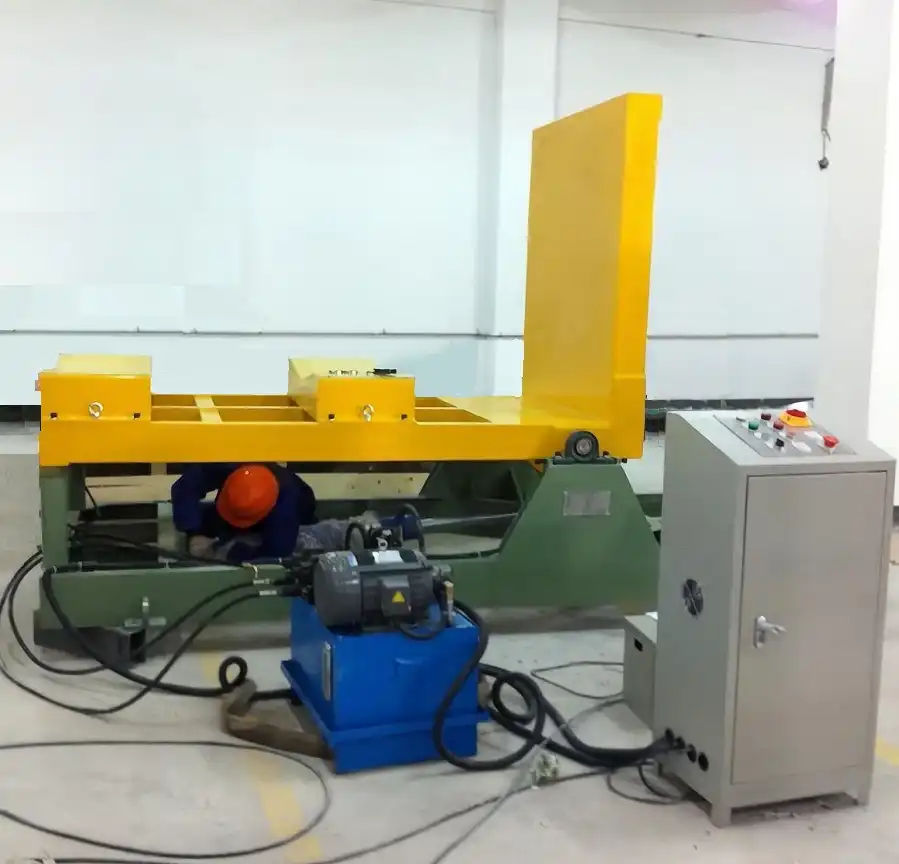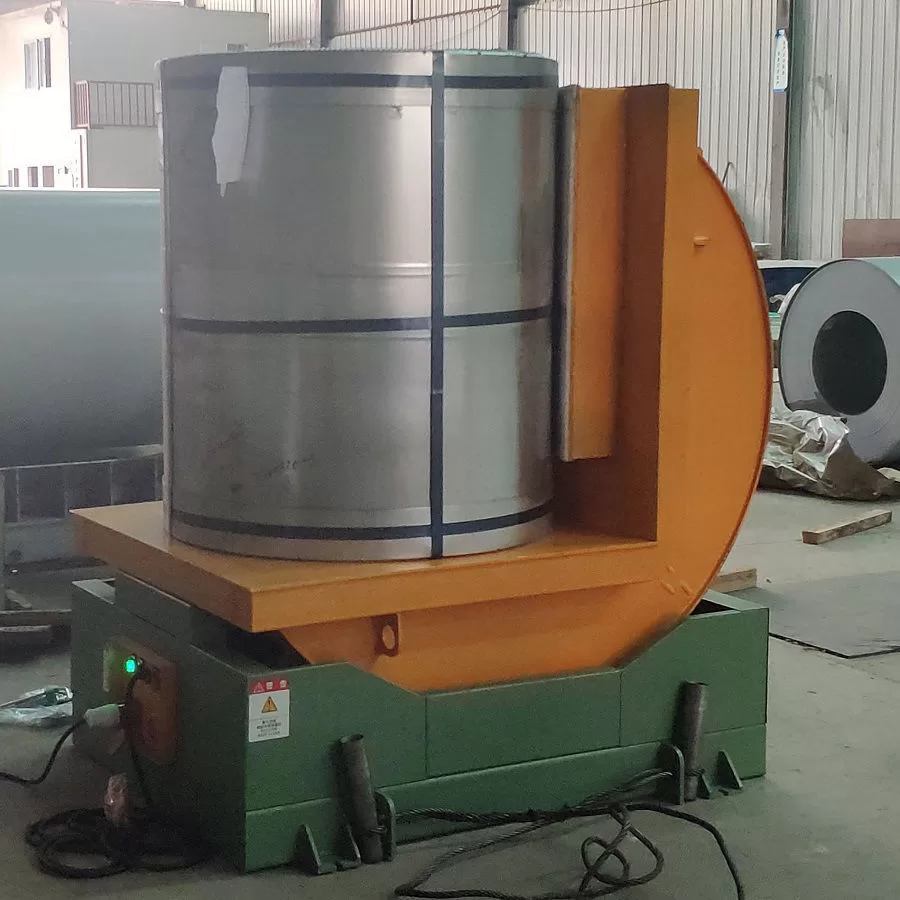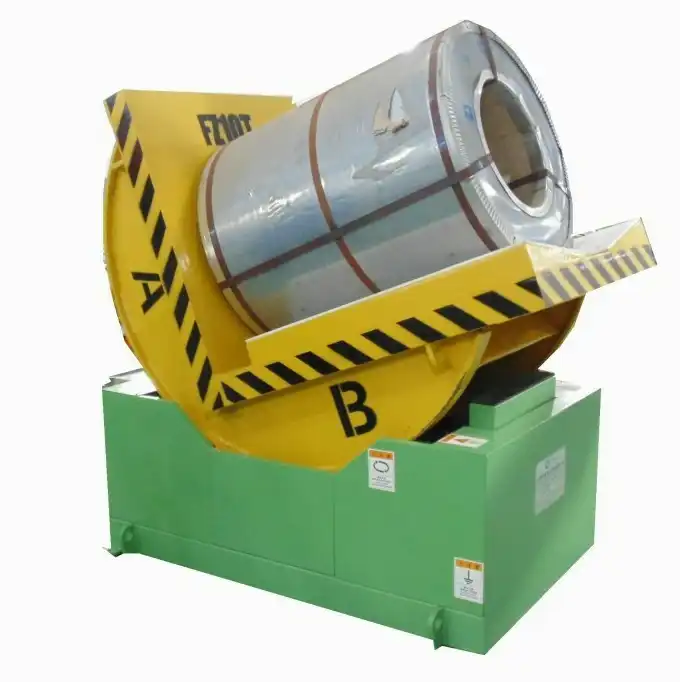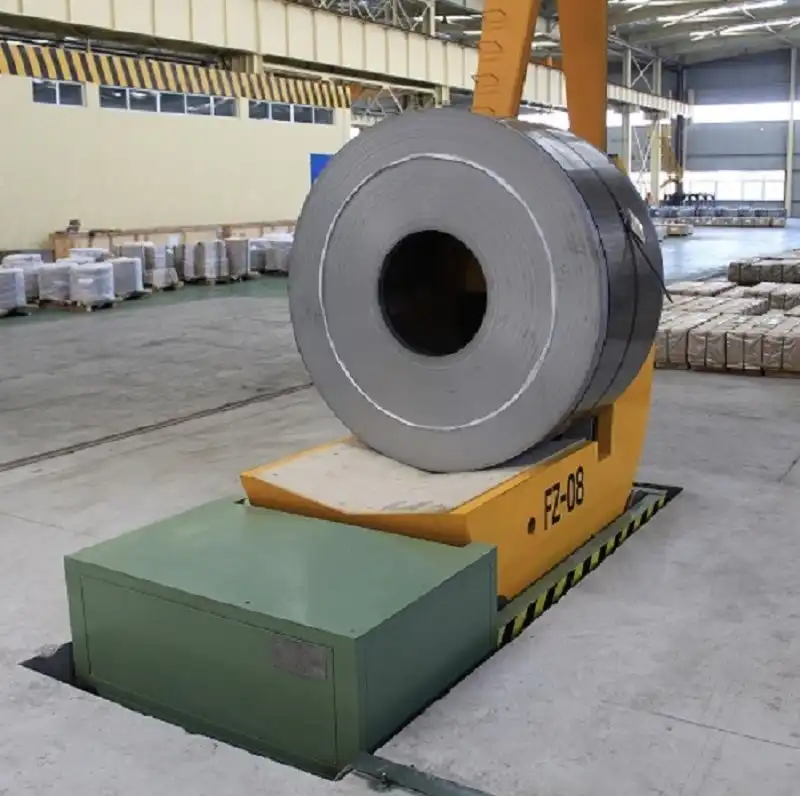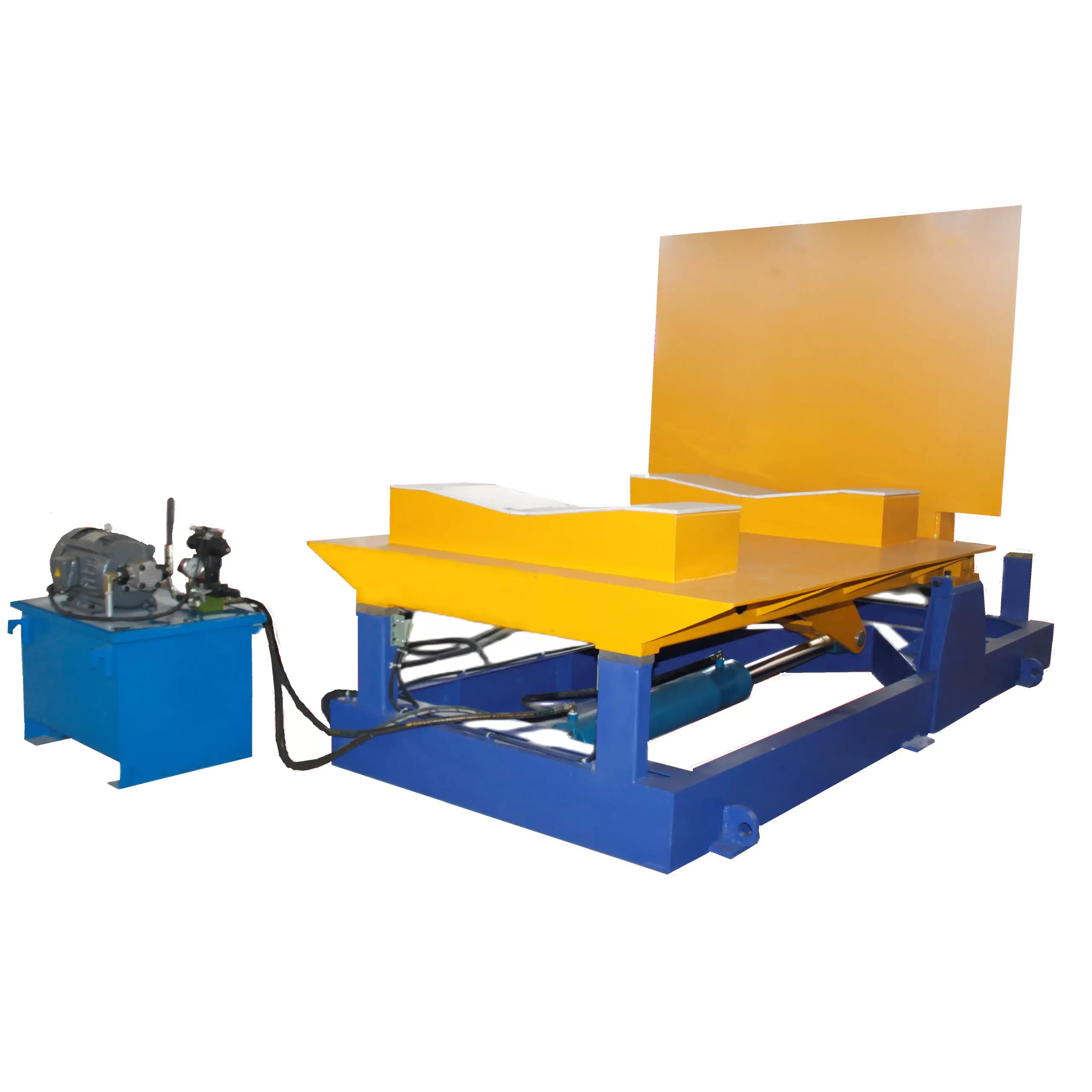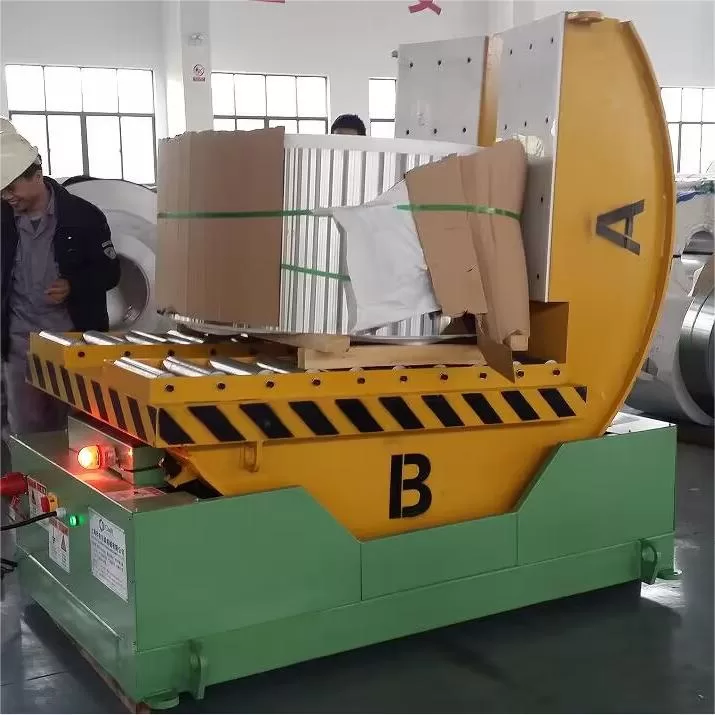How to Evaluate the Efficiency of a Coil Tilting Machine in Heavy-Duty Operations
Introduction
In the heavy-duty industrial sector, handling large metal coils requires specialized equipment to ensure safe, efficient, and precise operations. One such essential piece of machinery is the coil tilting machine. These machines are specifically designed to tilt heavy coils from a horizontal to a vertical position, or vice versa, which is a crucial task in industries such as steel manufacturing, aluminum production, and heavy metal fabrication.
But how do you measure the efficiency of a coil tilting machine in heavy-duty operations? With numerous options on the market, it's essential to evaluate key aspects like load capacity, tilting speed, safety features, and automation levels to ensure that the machine meets your operational needs.
This article will guide you through the factors that determine the efficiency of a coil tilting machine, helping you make an informed decision that improves productivity, minimizes risks, and reduces downtime in your heavy-duty operations.
1. Understanding Coil Tilting Machines
What Is a Coil Tilting Machine?
A coil tilting machine is designed to change the orientation of large, heavy coils, typically from a horizontal to a vertical position or the reverse. These machines are vital in operations where the coils need to be prepared for further processing, storage, or transport. Tilting the coil is necessary for operations like slitting, cutting, or packaging.
Heavy-duty coil tilting machines are built to handle the massive weight and size of industrial coils, often weighing several tons. They are engineered to perform precise movements while ensuring the safety of both the operator and the coil itself.
Why Efficiency Matters in Coil Tilting
Efficiency in coil tilting translates to faster operations, less downtime, and improved safety. In heavy-duty environments, where production schedules are tight and materials are valuable, even small improvements in machine performance can significantly boost overall productivity. Evaluating the efficiency of a coil tilting machine ensures that it can meet the high demands of modern industrial operations without compromising on safety or accuracy.
2. Load Capacity and Durability
Evaluating Load Capacity
One of the first aspects to consider when evaluating the efficiency of a coil tilting machine is its load capacity. The machine must be able to handle the weight of the coils without straining its components or compromising safety. Coil tilting machines are available in a wide range of capacities, from handling smaller coils to those weighing 50 tons or more.
It's essential to select a machine that not only meets your current weight requirements but also has the flexibility to handle heavier loads as your production demands grow. Overloading a coil tilting machine can lead to premature wear, mechanical failure, and potential accidents.
Durability in Heavy-Duty Environments
Durability is another key factor in ensuring long-term efficiency. Coil tilting machines operating in harsh industrial environments must withstand repeated heavy loads, constant use, and exposure to dust, moisture, and other environmental factors. Machines constructed from high-grade steel and equipped with robust mechanical components tend to offer better longevity and reliability.
A durable machine reduces maintenance needs and downtime, which directly impacts operational efficiency.
3. Tilting Speed and Precision
Speed of Operation
The speed at which a coil tilting machine operates is a critical element of efficiency. In high-production environments, slow tilting speeds can create bottlenecks, delaying subsequent processes such as coil cutting, slitting, or packaging. Faster tilting speeds increase throughput, allowing operators to handle more coils within the same time frame.
However, speed should not come at the expense of safety or precision. Look for machines that offer adjustable speed controls, allowing the operator to tailor the tilting speed to the size and weight of the coil. This ensures that larger, heavier coils are handled more cautiously, while smaller coils can be processed more quickly.
Importance of Precision
Precision is equally important in evaluating the efficiency of a coil tilting machine. Industrial coils need to be positioned accurately for further processing, and even slight misalignments can result in material damage or production delays. Efficient coil tilting machines feature high-precision controls that allow for smooth, accurate movements, reducing the risk of errors and ensuring that coils are placed exactly where they need to be.
4. Automation and Control Systems
Benefits of Automation
In heavy-duty operations, automation plays a significant role in improving efficiency. Coil tilting machines with automated control systems require less manual intervention, reducing labor costs and minimizing the risk of human error. Automated machines can be programmed to tilt coils at precise angles and speeds, ensuring consistency across operations.
Automation also contributes to faster cycle times and allows operators to focus on other tasks while the machine performs its function. In high-production environments, the ability to automate repetitive tasks like coil tilting can lead to significant productivity gains.
User-Friendly Controls
An efficient coil tilting machine should come with user-friendly controls that make operation simple and intuitive. Modern machines are often equipped with touchscreen interfaces and programmable logic controllers (PLCs) that allow operators to adjust settings quickly and easily. This enhances efficiency by reducing the time needed to set up the machine and perform adjustments during operation.
5. Safety Features and Compliance
Ensuring Operator Safety
When handling heavy-duty coils, safety should always be a top priority. Efficient coil tilting machines are equipped with advanced safety features to protect both the operator and the equipment. Look for machines with emergency stop buttons, safety guards, and load-sensing technology that automatically stops the machine if an imbalance or overload is detected.
These safety features not only protect workers from potential injuries but also prevent equipment damage, further improving operational efficiency.
Compliance with Industry Standards
To ensure both safety and operational efficiency, coil tilting machines should comply with industry safety standards such as those set by OSHA (Occupational Safety and Health Administration) or other relevant regulatory bodies. Machines that meet these standards are typically designed with enhanced safety mechanisms, reducing the likelihood of accidents or non-compliance issues that can disrupt production.
6. Maintenance and Downtime Reduction
Minimizing Maintenance Requirements
One of the hallmarks of an efficient coil tilting machine is minimal maintenance needs. Machines that require frequent maintenance or repairs can disrupt production schedules and increase operational costs. Look for tilting machines that are designed with low-maintenance components, such as sealed bearings and self-lubricating systems.
Predictive maintenance features, such as built-in sensors that monitor wear and tear, can also help reduce downtime. These sensors alert operators to potential issues before they become major problems, allowing for timely maintenance and avoiding unexpected machine failures.
Reducing Downtime
Downtime is one of the most significant factors that can affect the efficiency of any heavy-duty operation. Efficient coil tilting machines are designed to minimize unplanned downtime through robust construction, durable components, and quick troubleshooting features. Machines with remote diagnostics capabilities allow operators and maintenance teams to quickly identify and resolve issues, further minimizing interruptions to production.
7. Energy Efficiency
Lowering Energy Consumption
In addition to speed, precision, and safety, energy efficiency is an important consideration in the overall evaluation of a coil tilting machine. Heavy-duty operations often require machines to run for extended periods, so choosing an energy-efficient tilting machine can lead to substantial cost savings over time.
Machines with variable speed drives and energy-saving modes are designed to reduce power consumption without compromising performance. Investing in an energy-efficient coil tilting machine not only lowers operational costs but also contributes to more sustainable manufacturing practices.
8. Long-Term ROI and Total Cost of Ownership
Evaluating Return on Investment (ROI)
When considering the efficiency of a coil tilting machine, it’s essential to look beyond the initial purchase price and evaluate the long-term return on investment (ROI). A machine that offers faster tilting speeds, improved safety, and reduced maintenance will pay for itself over time through higher productivity and lower operational costs.
Total Cost of Ownership
The total cost of ownership (TCO) includes not only the upfront cost of the machine but also ongoing expenses such as maintenance, energy consumption, and downtime. An efficient coil tilting machine with durable construction, low maintenance requirements, and energy-saving features will typically have a lower TCO, making it a better investment for heavy-duty operations in the long run.
Conclusion
Choosing the right coil tilting machine for heavy-duty operations involves evaluating several key factors, including load capacity, tilting speed, precision, automation, and safety features. By carefully considering these aspects, you can select a machine that maximizes efficiency, improves worker safety, and reduces operational costs.
An efficient coil tilting machine not only enhances productivity but also ensures that your operation runs smoothly, with minimal downtime and maintenance requirements. Whether you’re upgrading your current equipment or investing in a new system, taking the time to evaluate the efficiency of your coil tilting machine will pay dividends in terms of long-term ROI and operational success.
